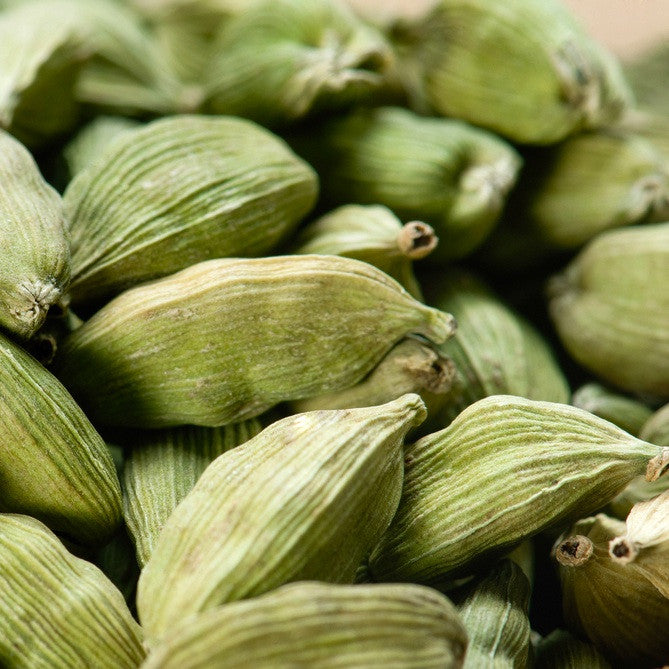TIMELESS Essential Oils
Cardamom
Couldn't load pickup availability
Pure, Therapeutic Cardamom essential oil
Product Details
Botanical name
Elettaria cardamomum maton
Extraction method / Source
Steam distillation / Seeds
Aroma
Sweet spicy, balsamic with floral undertones
Note classification
Middle
Odor Intensity
4
Key constituents
1,8 Cineol, Alpha-terpinyl acetate, Limonene,
Plant description
Botanical family: Zingiberaceae (Ginger)
Growing Practices
Cultivated without the use of chemical fertilizers or pesticides.
Properties
Antiseptic, antispasmodic, carminative, cephalic, digestive, diuretic, expectorant, stimulant, stomachic, tonic (Battaglia, 2003, Schnaubelt, 2011).
Please refer to the Glossary for terms which may be new to you.
Uses / Benefits
Aphrodisiac, energizing,warming, reduces coughing, improves alertness, helps to relieve flatulence and bloating. Adds a rich, warm spicy note to natural perfumes.
Fragrant influences
Aphrodisiac; energizing, improves alertness
Modes of Administration
Topical: massage, compress, bath, skin care.
Inhalation: direct inhalation, diffuser, oil vaporizer.
Blends well with
Bay, Bergamot, Black Pepper, Cedarwood, Cinnamon, Coriander, Fennel, Ginger, Grapefruit, Jasmine, Lemon, Lemongrass, Litsea Cubeba (May Chang), Mandarin, Neroli, Orange, Palmarosa, Patchouli, Petitgrain, Sandalwood, Vetiver, Ylang Ylang
Safety
Nontoxic, non-irritating, non-sensitizing (Battaglia, 2003)
Notice
This information is for educational purposes only. It has not been evaluated by the US Food and Drug Administration. It is not intended to diagnose, treat, cure or prevent any condition or disease. Although we strive to provide information which is accurate and up to date, we cannot guarantee the accuracy or completeness of this information.
Precautions
Pure essential oils are highly concentrated plant extracts. Do not use them undiluted, or in the eyes or mucus membranes. If applying an essential oil to the skin, always dilute it with a proper carrier oil and test on a small patch of skin before applying to a large area. Do not take them internally except under the direction of a qualified professional trained in Aromatherapy. Always familiarize yourself with the safety, contraindications and proper preparation of each essential oil before use. Note that when using essential oils for children and the elderly, very low concentrations should be used. Keep all essential oils away from children and pets.
References
Battaglia, Salvatore, The Complete Guide to Aromatherapy, Second Edition, 2003. The International Centre of Holistic Aromatherapy, Brisbane, Australia
Green, Mindy, Natural Perfumes, 1999. Interweave Press, Loveland, CO.
International Fragrance Research Association, http://www.ifraorg.org/en-us/standards (January 5, 2016)
Schnaubelt, Kurt, The Healing Intelligence of Essential Oils: The Science of Aromatherapy, 2011. Healing Arts Press, Rochester, VT.
Tourles, Stephanie L., Hands On Healing Remedies, 2012. Storey Publishing, North Adams, MA.
United States Food and Drug Administration, HHS, 182.1 Substances That Are Generally Recognized as Safe, 182.20 Essential oils, Oleoresins (solvent-free), and natural extractives (including distillates), http://www.gpo.gov/fdsys/CFR-2012-title21-vol3-sec182 (January 28, 2016)
Worwood, Valerie Ann, The Complete Book of Essential Oils & Aromatherapy, 1991. New World Library, Novato, California
TIMELESS Essential Oils guarantees the purity and quality of all our therapeutic oils. Current Certificate of Analysis is available upon request. All essential oils are best stored in an airtight container away from heat and light.


